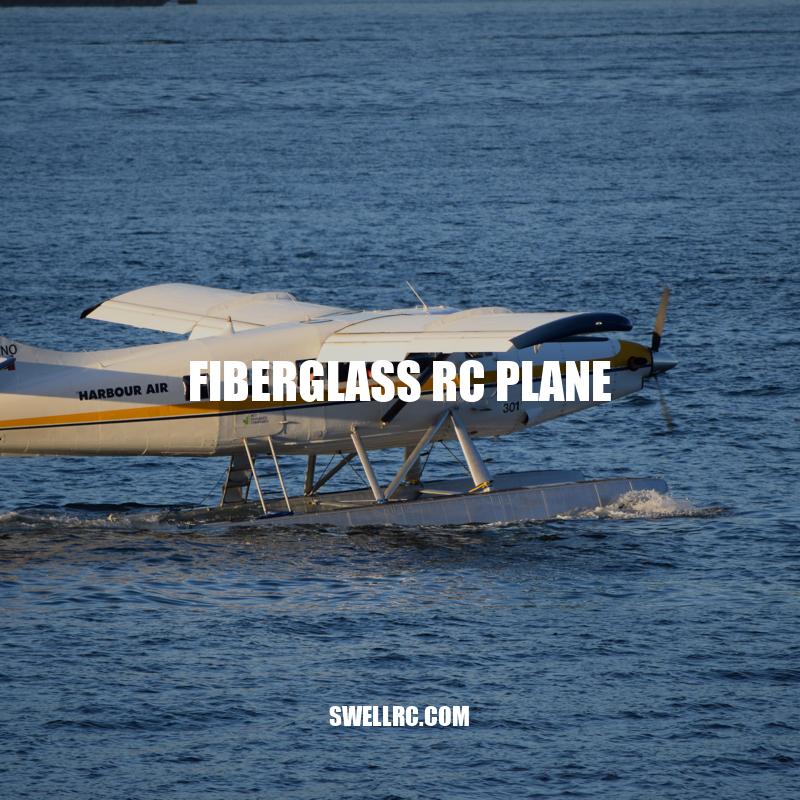Building and Flying Fiberglass RC Planes: An Ultimate Guide
If you’re looking for an exciting and challenging hobby, then building and flying fiberglass RC planes can be an excellent choice. Fiberglass is a durable, strong, and lightweight material that makes it ideal for constructing remote-controlled planes. Building a fiberglass RC plane requires a significant investment of time, effort, and money, but it can also be an incredibly rewarding experience. Fiberglass RC planes are not only beautiful to look at but also perform better than their counterparts made of wood or foam. Moreover, they are capable of achieving greater speeds, staying in the air for a more extended period, and flying for farther distances.
Fiberglass airplanes are designed based on a laminated structure, where each layer of fiberglass fabric is bonded with polyester or epoxy resin. The resulting structure is strong enough to withstand the rigors of flying, even when there is a rough landing. That’s why fiberglass RC planes are widely used in competitions, airshows, and other flying events. With the right expertise and knowledge, your fiberglass RC plane can be customized to perform aerobatic maneuvers, hover, or glide effortlessly.
In the next sections of this article, we’ll dive deeper into building and flying fiberglass RC planes, covering everything from choosing the materials to assembling the various parts. We’ll also provide useful tips on how to fly an RC plane safely, and what to watch out for while building one. Whether it’s your first time building an RC plane or not, this article will be a helpful guide for anyone interested in the art of fiberglass RC plane construction and flying.
Choosing the Right Materials
When it comes to building fiberglass RC planes, choosing the right materials is crucial. Here are some things you should consider:
- The quality of the fiberglass fabric
- The type of resin to be used, i.e., epoxy or polyester
- The thickness of the fiberglass fabric
- The type of foam to be used, i.e., extruded polystyrene or expanded polystyrene
- The thickness of the foam core
- The type of wood to be used for the control surfaces
- The size and model of the motor
When purchasing materials, make sure to buy from reputable suppliers to ensure high quality and durability. Some popular websites that sell fiberglass RC planes and parts are:
- HobbyKing
- Tower Hobbies
- Pegasus Hobbies
Once you’ve purchased your materials, it’s time to start building your plane. In the next section, we’ll cover the steps involved in building a fiberglass RC plane.
What materials are used to build RC planes?
To build RC planes, you can use materials like plastic, balsa wood or foam. However, foam is the most affordable and safest option. Building RC planes with foam is made easier as you can purchase one 1/2” foam core board for the entire plane. You can check out websites that sell foam core boards for RC planes for more information on this material.
Building Your Fiberglass RC Plane
Building a fiberglass RC plane can be a time-consuming process, but the end result is worth the effort. Here are the steps involved in building your plane:
- Assemble the fiberglass fuselage by laying out the pieces and joining them together with epoxy or polyester resin.
- Add foam to the cockpit area to give your plane shape and support the canopy.
- Construct the wings and tail sections by creating a framework using balsa wood and covering them with fiberglass fabric.
- Join the wings to the fuselage by attaching them to a pre-built wing saddle.
- Attach the control surfaces to the tail section.
- Install the motor and servos in the fuselage.
- Install the receiver and battery pack in the cockpit area.
Here are some interesting facts about building fiberglass RC planes:
- Building your own plane gives you the flexibility to customize it to your liking.
- Fiberglass is a popular material for RC planes because it is lightweight and strong.
- RC planes have been around since the 1930s, but advancements in technology have made them more accessible and easier to build.
If you’re looking for detailed instructions and plans for building a fiberglass RC plane, there are many resources available online. Some popular websites include:
If you’re looking for a pre-built fiberglass RC plane, there are many options available as well. Check out the following table for some popular models and their features:
| Model | Wingspan | Weight | Motor | Price |
|---|---|---|---|---|
| Carbon Cub Z RTF | 84 in | 8.6 lb | Brushless | $549.99 |
| Habu STS 70mm EDF Jet RTF | 39 in | 2.3 lb | Brushless | $329.99 |
| Phoenix Model Extra 330S GP/EP ARF | 65 in | 8.4 lb | Gas or Electric | $379.99 |
What do you need to build your own RC plane?
To build your own RC plane, you will need a kit that includes balsa wood or foam, glue, a motor, propeller, ESC, battery, radio transmitter and receiver, and servos. You will also need basic tools such as a hobby knife, sandpaper, pliers, and screwdrivers. Various websites like HorizonHobby.com, Amazon.com, and FlyingGiants.com offer different types of RC airplane kits and parts.
Flying Your Fiberglass RC Plane
Flying your fiberglass RC plane can be a thrilling experience, but it’s important to follow proper safety procedures and have the right equipment. Here are some tips for flying your plane:
- Find a flying location that is clear of obstacles and away from people.
- Check that your plane is properly balanced and aligned before takeoff.
- Always perform range and control checks before flying your plane.
- Takeoff by gradually increasing the throttle and gently lifting the nose.
- Keep your plane at a safe distance and avoid flying directly overhead.
- Land by gently reducing the throttle and gliding your plane to the ground.
- Always be aware of your surroundings and avoid flying in restricted areas.
Here are some interesting facts about flying fiberglass RC planes:
- RC planes can reach speeds of up to 200 mph.
- The first successful RC flight was made in 1937 by Model Airplane News editor William “Bill” Winter.
- RC planes have evolved to include brushless motors, lithium-polymer batteries, and sophisticated remote control systems.
If you’re looking for a community of RC plane enthusiasts, there are many online forums and websites where you can connect with others who share your hobby. Some popular websites include:
In addition, many RC plane manufacturers offer support and resources on their websites. Some popular manufacturers of fiberglass RC planes include:
- HobbyZone
- Great Planes
- E-flite
How fast can a RC plane fly?
RC planes can fly at speeds up to 320 km/h (200 mph). Operating such planes requires great skill. The flying of these planes is restricted in the USA by the FAA, and can only be done at approved AMA Academy of Model Aeronautics sites, where certified turbine pilots may fly.
Conclusion
Building and flying a fiberglass RC plane can be a challenging yet rewarding hobby that requires patience, skill, and attention to detail. With the right materials, equipment, and knowledge, you can create a beautiful plane that is not only a joy to look at but also fun to fly. Remember to follow proper safety procedures and choose a suitable flying location to ensure a safe and enjoyable experience. And if you ever run into problems during the process, don’t be afraid to consult online resources or seek assistance from your local RC club. With a bit of practice and perseverance, you’ll soon be soaring through the skies with your very own fiberglass RC plane.



